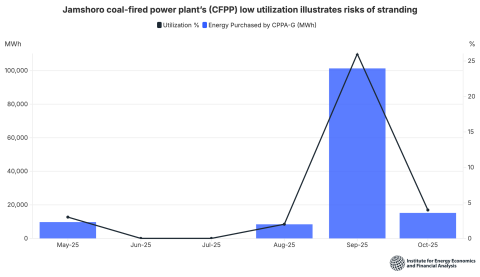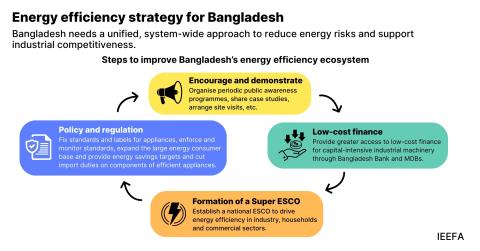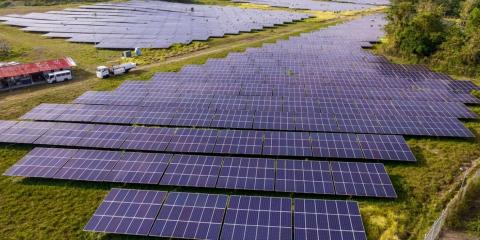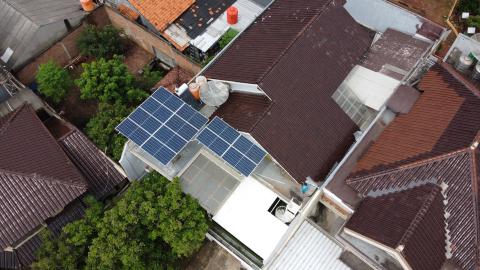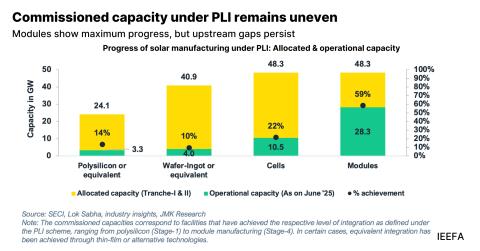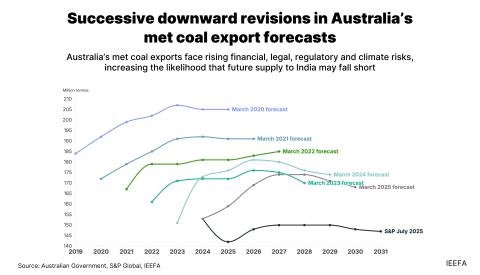Financing an inclusive future: Building India’s Just Transition ecosystem

Key Findings
India has financial instruments that could align with Just Transition (JT) objectives, including Sovereign green bonds, Corporate Social Responsibility (CSR) funds, and concessional finance from multilateral development banks. With policy adjustments, these can support JT through tagging, outcome-based disbursement, and community-focused metrics.
Private capital will be critical to financing the transition, but investors need clearer policy signals, stronger risk mitigation frameworks, and measurable outcomes to engage confidently in JT projects. Blended finance models can help de-risk investments in socially focused transition initiatives.
Building capacity at all levels is critical for effective Just Transition implementation. Central ministries, regulators, financial institutions, state agencies, and civil society all need targeted training and institutional support to understand and apply JT principles.
India’s ambition to achieve net-zero emissions by 2070 requires a transition that is not only low-carbon but also inclusive and equitable. This green transition will impact fossil fuel-dependent sectors, such as coal mining, thermal power, cement, steel, and automobiles, that are vital to India’s economy and workforce. The consequences will be especially acute in regions like Jharkhand, Chhattisgarh, and Odisha, which have historically driven industrial growth through coal and carbon-intensive activities. The economies and revenues of these states are heavily dependent on these industries. Hence, the green transition must go beyond emissions reduction to address livelihoods, social equity, and regional economic diversification. Financing this inclusive transition, popularly known as ‘Just Transition’ (JT), calls for an integrated approach that aligns policy, institutional mechanisms, and capital flows with both sectoral and regional priorities.
Integrating Social Equity into Climate Finance
In India, conventional climate finance has predominantly targeted decarbonisation initiatives, including renewable energy expansion, electric mobility, and green building development. However, a Just Transition demands that finance also support social equity goals. This includes financing for skill development, entrepreneurship development, small enterprise support, and safety nets for communities in regions adversely affected by the green transition. Such measures can help people to navigate the transition more smoothly, and they can gain employment in a greener economy.
To date, financing for these social dimensions remains limited and fragmented in the country’s transition journey. Public finance mechanisms, such as fiscal transfers and green budgeting, can be designed to support JT-aligned activities, particularly in vulnerable regions.
Bridging the Institutional Coordination Gap
India's policy discourse on Just Transition is gaining momentum, with growing interest from the Finance, Power, Coal, Environment, and Labour ministries. Yet, institutional coordination remains a weak link. Currently, there is no dedicated mechanism to harmonise JT financing across the federal government, regulators, and sub-sovereign governments. This lack of integration results in missed synergies, inefficient funding flows, and inadequate alignment with on-ground needs.
Unlocking and Aligning Existing Instruments
India already possesses several financial instruments that can be aligned with JT objectives. Sovereign green bonds, Corporate Social Responsibility (CSR) funds, and concessional finance from multilateral development banks can be redirected towards JT-aligned activities through tagging, outcome-based disbursement, and community-focused metrics.
For example, CSR spending in coal-dependent regions could prioritise entrepreneurship, health services, and education to support long-term regional diversification. Similarly, development finance institutions can offer concessional loans for infrastructure repurposing or clean industry clusters in fossil fuel regions.
Enabling Private Capital
Private capital will play a critical role in financing the Just Transition. However, investors need clearer policy signals, risk mitigation frameworks, and measurable outcomes to confidently participate in JT projects.
Blended finance models, combining concessional public funding with commercial capital, can de-risk investment in socially focused transition initiatives. Similarly, standardised social impact metrics embedded in Environmental, Social, and Governance (ESG) frameworks can help investors evaluate returns not just in financial terms, but also in terms of social outcomes. Sovereign and municipal green bonds can incorporate “just” criteria through social tagging, while sustainability-linked loans can be tied to workforce or regional development targets.
Building Capacity
Building capacity at all levels is critical to implementing a Just Transition effectively. The Central government and its departments, regulators, financial institutions, state agencies, and civil society need targeted training and institutional support to understand and apply JT principles. Financial regulators like the Securities and Exchange Board of India (SEBI) and the Reserve Bank of India (RBI) need the capacity to incorporate JT into frameworks, such as Business Responsibility and Sustainability Reporting (BRSR), green deposits, and Priority Sector Lending. At the state level, officials need technical know-how to assess transition risks, design and implement pilot projects, and integrate JT into development planning. Civil society organisations and think tanks must also be equipped to support data collection, community engagement, and monitoring, ensuring that policy efforts are grounded in local realities and lead to tangible outcomes.
A Strategic Roadmap for Just Transition Financing
The path forward requires phased and coordinated action across key stakeholder groups to build an inclusive Just Transition financing ecosystem.
Short-Term Initiatives (2025–30)
Over the next few years, preparatory actions should be prioritised to build institutional readiness for an accelerated transition. SEBI can mandate JT disclosures under the BRSR framework—a sustainability reporting guideline for the top 1,000 companies by market capitalisation in India—where relevant. SEBI can promote JT as a guiding principle in ESG and social finance instruments. The RBI can recognise JT-aligned projects under Priority Sector Lending, green deposit guidelines, and green loan principles. Institutions like NITI Aayog, the World Bank, and the Asian Development Bank can support with strategic direction and technical assistance.
Medium-Term Initiatives (2031–35)
In this phase, the focus should shift to scaling finance and institutional support. The RBI and SEBI can establish JT financing windows and require banks and Non-Banking Financial Companies to disclose JT transition plans. State governments should allocate JT-focused budgetary resources and build capacity for green jobs. Corporations can support Micro, Small, and Medium Enterprises by easing credit terms and offering training programmes across their supply chains.
Long-Term Initiatives (2035 and beyond)
A successful JT requires sustained engagement from all stakeholders. The Ministry of Power can lead the coal-to-renewables shift, while state governments can reinvest green sector tax revenues into JT programmes. Public and private enterprises must collaborate to ensure inclusive outcomes. Academic institutions and think tanks can develop evidence-based strategies to guide long-term planning and safeguard vulnerable communities during the transition.
The Way Forward
India’s net-zero journey must be both ambitious and empathetic. As the country accelerates the shift away from fossil fuels, it must also strengthen the social scaffolding required to ensure that workers, communities, and vulnerable regions are not left behind. A well-crafted Just Transition financing ecosystem, grounded in regional and sectoral realities, can ensure that the transition is not only green, but also fair.
This article was first published on World Economic Forum.



